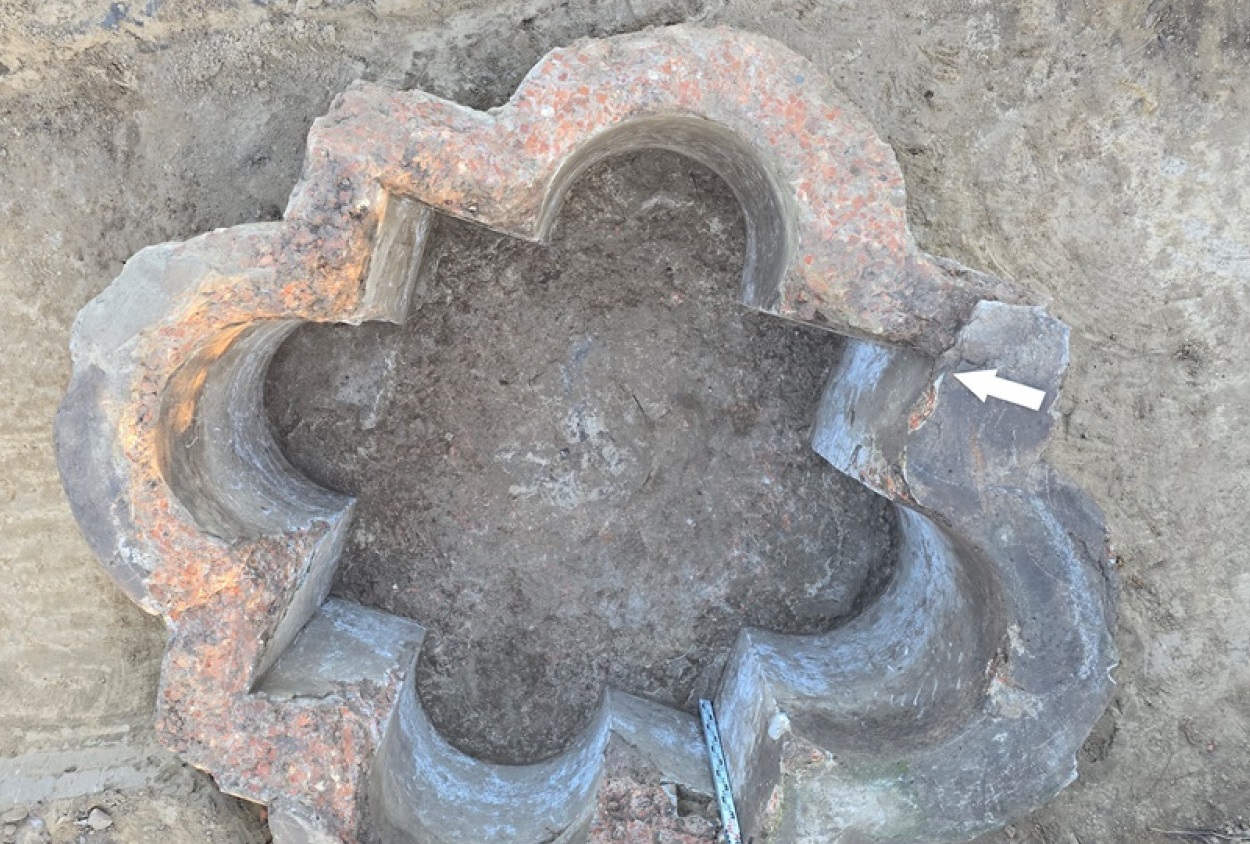A construction team in Zakroczym, Poland, have uncovered a mysterious fountain shaped like a clover during works on the National Road No. 7 between Czosnów and Modlin.
Archaeologists examining the discovery suggest that the fountain dates from the late 19th or early 20th century, but how it came to be on an escarpment overlooking the Vistula River is a mystery.
Constructed from brick debris bound with white lime mortar, the fountain is shaped like a clover in a Moroccan style. Remnants of a metal pipe at its centre provide further evidence that the structure functioned as a fountain.
During the 19th century, Neo-Moorish, an exotic revival architectural style emerged in Europe, inspired by Romanticist Orientalism. Moorish architecture influenced synagogue design in Poland, coinciding with a period of cultural exchange between Polish and Moroccan artists.

According to Małgorzata Tarnowska, spokeswoman for the Warsaw branch of the General Directorate for National Roads and Motorways, the fountain may have once provided water for a temporary military camp associated with the activities at the nearby Modlin Fortress.
Modlin Fortress was built on the orders of Napoleon Bonaparte during the Napoleonic Wars, designed to serve as a strategic military outpost for the French until it was taken over by the Russian Empire in the 19th century.
“The Modlin Fortress underwent modernisation between 1894 and 1900, during which brick elements were replaced with concrete. It is possible that bricks from this work were repurposed to construct the fountain,” said Tarnowska.
Header Image Credit : GDDKiA
Sources : General Directorate for National Roads and Motorways

